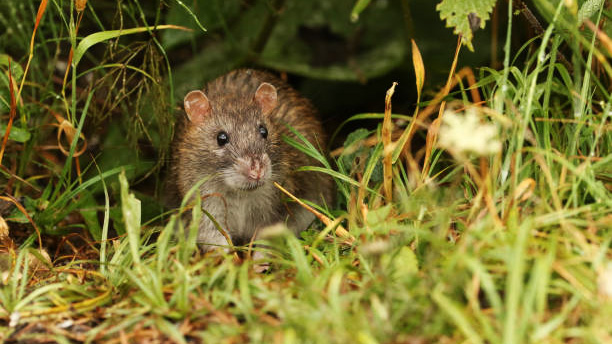Te Ipukarea Society seeking donations for rat eradication project
Monday 6 December 2021 | Written by Alana Musselle | Published in Environment, National

A rat makes its way through the grass. Image/GETTY
Te Ipukarea Society (TIS) have started to receive donations going towards the rat eradication project to rid the island of Suwarrow of its rat infestation.
Their aim of the project is to rid the island atoll of rats, mainly for the sake of the many birds which reside there.
TIS received a generous donation of $500 from Dr Wolfgang Losacker who used to live in the Cook Islands and wrote a book on the South Seas and the Cook Islands.
Following on from the successful Bird of the Year competition, the Society shared their hope that more people would now appreciate the value to the environment of the many birds of the Cook Islands.
Rats (kiore) is one of the main threats to birds and TIS had engaged in a number of projects over the years to remove them from Suwarrow, with the atoll being the official Cook Islands National Park, globally recognised as an important bird area.
TIS had hoped that they had jumped the final hurdles of this race and killed the last of the Kiore on Suwarrow in 2018. That was after a five-week campaign involving many hours of trapping, cutting tracks through dense bush and spreading rat poison.
However, on a recent monitoring trip they found there was a remnant population of rats remaining on one of these small motu. This motu is home to breeding seabirds, including frigates, red tailed tropic birds and brown boobies.
Alanna Smith from TIS said: “Ground nesting birds are particularly vulnerable to rats. For this reason, there is now a race against time to raise funds to eradicate those rats, before they spread to the other motu.”
TIS is hoping to partner with the National Environment Service as they partnered with them in their last attempt to get rid of the rat problem. The estimated cost for the project is $50,000, including the charter cost of the Marumaru Atua voyaging canoe.
“Not only is this the most environmentally friendly way to travel between islands, with a very low carbon footprint, it is also the most affordable option available to us,” said Smith. In addition, this voyage will provide valuable training for some of the young up and coming Cook Islands voyagers.
On Suwarrow, the actual eradication programme would require a bit of effort and a strong team. First a series of tracks would need to be cut across the islet using a machete to clear the dense undergrowth, to allow clear access. “We hope to finally make Suwarrow become rat free. It’s essential that we treat the eradication project with urgency to ensure we reduce the chance of reinfestation to neighbouring islands,” Smith said.














































